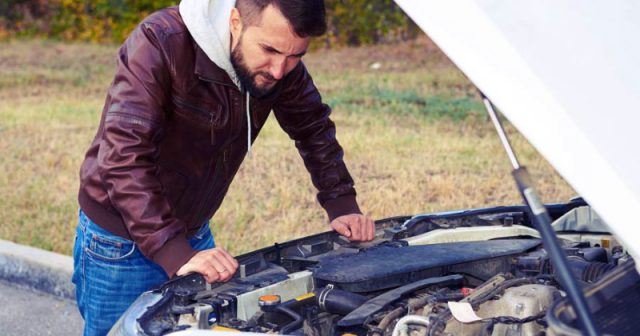
Do you remember KITT from Knight Rider or Christine from the film of the same name? No ordinary vehicle is as heroic or evil as those, but every car does have a unique identifier: the Vehicle Identification Number (abbreviated as VIN).
A standard VIN consists of 17 characters (letters and numbers). Knowing and recording your car’s VIN is useful in many situations: vehicle registration, insurance applications, recall checks, and ownership verification. Because it’s tied to the vehicle’s manufacturing and ownership records, a VIN helps buyers research the real history of a used car before purchase.
The 17-character VIN format is defined by international and U.S. rules and applies to most motor vehicles and trailers built since 1981, including motorcycles, mopeds, scooters, and trailers.
Where to Find the VIN
The VIN appears both in your documents and on the vehicle. The code should be identical everywhere it is shown. Comparing the VIN on the vehicle with the one on the paperwork helps detect fraud (for example, VIN cloning).
On Your Vehicle
Manufacturers assign the VIN and place the required “public VIN” where it is visible without opening the vehicle. Common locations include:
- The lower corner of the windshield on the driver’s side (visible on the dashboard from outside the vehicle).
- The driver’s door or door jamb/pillar on a certification label.
Depending on the type of vehicle, you may also see the VIN (or a VIN derivative) marked in additional places:
- Motorcycles/scooters: typically on the steering neck/headstock or a label on the frame; also referenced in the owner’s manual.
- Trailers: on a plate or sticker on the tongue or on the frame near the front.
Your owner’s manual and the manufacturer’s website can also tell you where the VIN is located on a specific model.
Out-of-State and Imported Vehicles
VIN inspections in the United States are handled at the state level. Many states require a VIN verification when titling an out-of-state, rebuilt, or salvage vehicle; the forms and procedures vary by state. For example, Michigan uses a TR-54 Vehicle Number and Equipment Inspection for certain transactions, while Montana’s Motor Vehicle Division conducts Level I–III VIN inspections in specific cases.
Note that the well-known “25-year rule” relates to federal import eligibility (FMVSS compliance) for vehicles at least 25 years old. It is not a national DMV VIN-verification program (there is no national DMV in the U.S.).
In the Documents
According to DMV guidance and manufacturers, the VIN is typically shown in:
- your insurance card or policy documents;
- the vehicle registration card;
- the title (certificate of ownership);
- service/repair records and invoices;
- the owner’s manual or glovebox literature;
- police reports or incident documents, when applicable.
What Does a VIN Look Like?
A VIN is a 17-character string using digits and capital letters. To avoid confusion with numbers, the letters I, O, and Q are not used. The VIN may also appear alongside a barcode or QR code for quick scanning, but that scannable code is optional.
- a metal plate at the base of the windshield (dashboard);
- a label on the driver’s door or door jamb/pillar;
- a stamp/etch on the frame or other components (varies by make/model).
Some vehicles have VIN etching on glass as a theft deterrent, but the official public VIN plate is the one visible through the windshield and/or on the certification label.
What to Do If the VIN Is Missing, Altered, or Doesn’t Match
A VIN problem is a serious warning sign. It can indicate clerical errors, title washing, or theft. Use this checklist before paying, signing, or moving the vehicle.
- Pause the purchase. Don’t exchange money, sign the title, or remove the vehicle until the issue is resolved. Ask the seller for written explanations and supporting records.
- Verify all VINs match exactly. Compare the public VIN plate (base of the windshield, driver side), the certification label (driver door/jamb), and paperwork (title, registration, bill of sale, insurance). Require a character-for-character 17-digit match.
- Check for tampering. Look for non-factory rivets, scratched/repainted metal, misaligned plates, bubbled labels, inconsistent fonts/spacing, or a missing federal certification label.
- Request a state VIN verification. Contact your state DMV or law-enforcement inspector for a physical inspection. In some cases, states can assign an ID after proof of ownership and compliance.
- Involve law enforcement when appropriate. If you suspect a stolen or altered VIN, report it. Never modify plates or labels yourself.
- Only proceed after full resolution. Buy only once the VIN is verified, the title is clean and matches, and all labels are validated. Keep copies of all records and photos.
You’ve Spotted the VIN – What’s Next?
First, save it somewhere secure. You’ll need it for DMV transactions, insurance, warranty questions, recall checks, and police reports. You can also use your VIN to check for open safety recalls.
An identifier for a used car also lets you run a detailed online search.
How to Decode a VIN Online
Each character encodes information (manufacturer, vehicle attributes, model year, plant, and serial number). You can decode a VIN character by character, but that alone won’t reveal the vehicle’s full history.
Our online VIN decoder goes beyond basic decoding by pulling data from multiple associated databases. It can surface issues such as title brands or prior total-loss events. Use it to learn more before you buy.
Note: No single database captures every accident or repair. Always compare the VIN on the vehicle to the VIN on the documents and consider a professional inspection when in doubt.